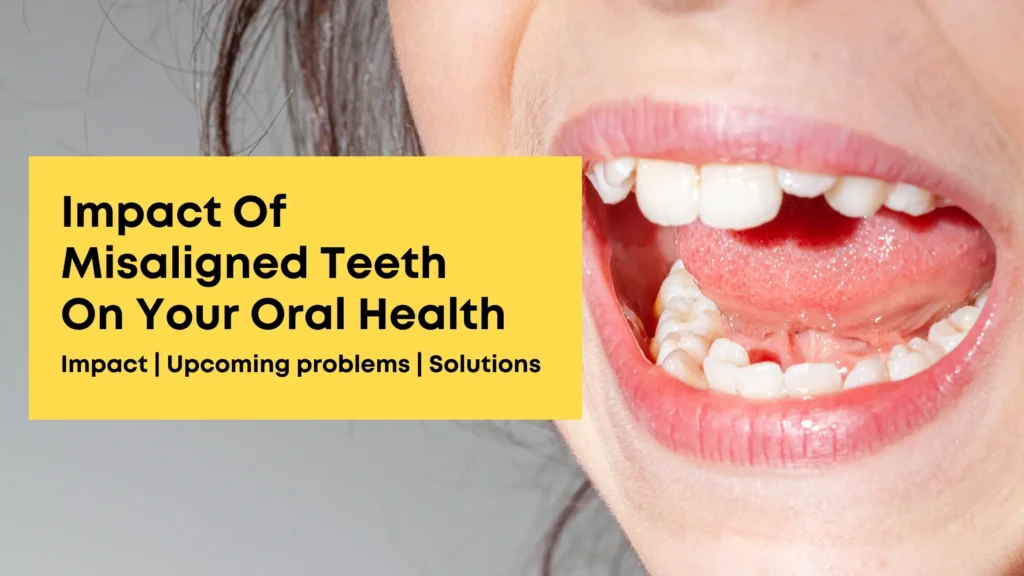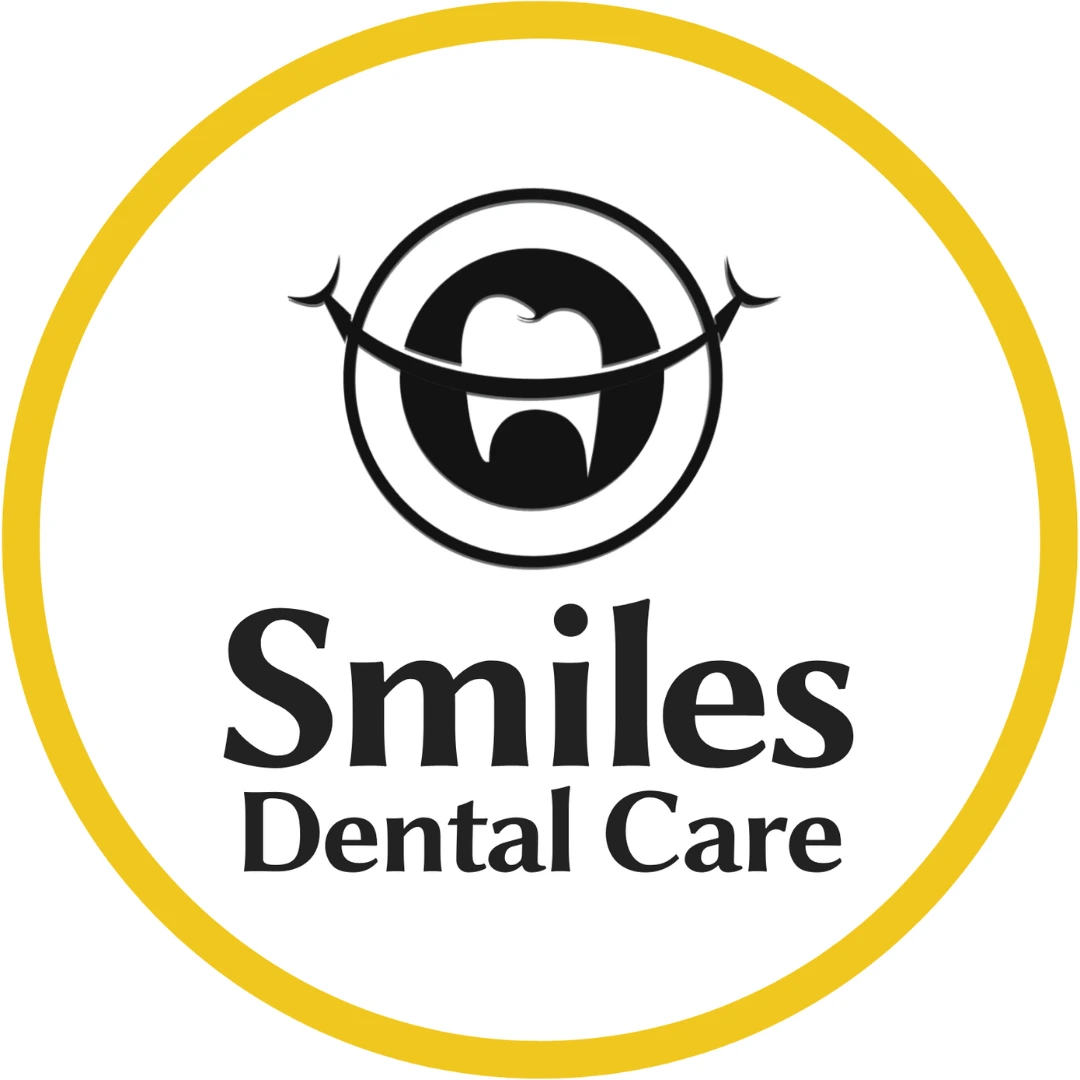
When it comes to oral health, most people think about cavities, gum disease, or regular cleanings, but one often overlooked aspect is the alignment of teeth. The impact of misaligned teeth on oral health is more profound than just an aesthetic concern. Misalignment can lead to a host of problems, from difficulty in cleaning teeth properly to increased risk of gum disease and even jaw pain. While many individuals may choose to delay orthodontic treatment due to cost, time, or inconvenience, waiting too long can worsen the issues and result in more complex and costly treatments down the road. In this blog, we will explore the various ways misaligned teeth can affect your oral health and why timely intervention is crucial.
What Are Misaligned Teeth?
Misaligned teeth, also known as malocclusion, refer to teeth that are crooked, overcrowded, or positioned incorrectly within the jaw. There are several types of misalignments, including:
- Overbite: Upper front teeth overlap over the lower teeth.
- Underbite: Lower front teeth protrude past the upper teeth.
- Crossbite: Upper teeth sit inside the lower teeth rather than outside.
- Open bite: Upper and lower teeth do not meet when the mouth is closed.
These conditions not only affect the appearance of your smile but also have long-term consequences on your oral and overall health.
The Hidden Impact of Misaligned Teeth on Oral Health
1. Risen Risk of Tooth Decay and Gum Disease
One of the most immediate concerns is the difficulty in cleaning the misaligned teeth properly. Crooked or overcrowded teeth create tight spaces and overlapping areas which leads the food particles and plaque to accumulate easily. Even with regular brushing and flossing, these areas are hard to reach, leading to a higher risk of cavities and gum disease.
Misaligned teeth can also irritate the gums, causing inflammation and increasing the likelihood of periodontal disease. Gum disease, if left untreated, can progress to more severe conditions such as receding gums, bone loss, and ultimately, tooth loss.
2. Wear and Tear on Teeth
Teeth are designed to distribute the forces of biting and chewing evenly across all surfaces. When teeth are misaligned, certain teeth take on more pressure than others, leading to uneven wear. Over time, this can result in chipped, cracked, or worn-down teeth, which may require restorative treatments like fillings, crowns, or even dental implants.
Additionally, excessive wear can lead to enamel erosion, which weakens the teeth and makes them more susceptible to cavities and sensitivity
3. Difficulty in Chewing and Speaking
Malocclusion or misaligned teeth can also interfere with everyday functions like chewing and speaking. Misaligned teeth may make it difficult to chew food properly, leading to poor digestion and nutritional deficiencies. When food isn’t chewed thoroughly, it can place extra strain on your digestive system, leading to stomach issues.
In terms of speech, misaligned teeth can cause lisping or other speech impediments, particularly if the misalignment affects the positioning of the tongue or jaw. This can be frustrating and can also impact a person’s confidence and self-esteem.
4. Jaw Pain and TMJ Disorders
Another serious consequence of misaligned teeth is the strain it can place on the jaw muscles and joints. The temporomandibular joint (TMJ), which connects your jawbone to your skull, can become strained when your bite is not aligned correctly. This strain can lead to TMJ disorders, which are characterized by symptoms such as jaw pain, headaches, earaches, and even difficulty opening or closing the mouth. In severe cases, TMJ disorders can impact a person’s ability to eat, speak, and live comfortably, often requiring specialized treatment to alleviate the pain
5. Impact on Overall Health
Oral health is closely linked to overall health, and the impact of misaligned teeth can extend beyond the mouth. Research shows that gum disease, which is more likely to occur with misaligned teeth, is associated with several systemic health problems, including heart disease, diabetes, and respiratory issues. Bacteria from the mouth can enter the bloodstream, causing inflammation in other parts of the body, further highlighting the importance of addressing misaligned teeth early on.
Why You Shouldn’t Wait for Treatment
Many people delay seeking treatment for misaligned teeth because they view it as a cosmetic issue or believe it’s not urgent. However, waiting can lead to more severe problems that are harder and more expensive to fix.
1. Progressive Nature of Misalignment
Misaligned teeth do not improve on their own. They tend to get worse over time. As your teeth continue to shift and wear unevenly, problems like tooth decay, gum disease, and TMJ disorders can become more pronounced. Early intervention with orthodontic treatment can prevent these issues from escalating.
2. Cost and Complexity of Delayed Treatment
The longer you wait to address misaligned teeth, the more complex and costly the treatment may become. Minor alignment issues can often be corrected with less invasive methods, such as braces or clear aligners. However, if misalignment is allowed to progress, more extensive treatments like jaw surgery or tooth extractions may be necessary to correct the problem.
3. Impact on Quality of Life
Living with misaligned teeth can affect your daily life in numerous ways, from discomfort and difficulty eating to self-consciousness about your smile. Timely treatment can improve your quality of life by restoring function, reducing pain, and boosting your confidence
Treatment Options for Misaligned Teeth
There are several treatment options available for misaligned teeth, ranging from traditional braces to newer, less visible options like clear aligners. Your dentist or orthodontist can help determine the best course of action based on the severity of your misalignment and your individual needs
- Traditional Braces: These are metal brackets and wires that apply pressure to move teeth into the correct position.
- Invisalign: These are transparent trays that gradually shift teeth into place.
- Lingual Braces: These are similar to traditional braces but are placed on the inside of the teeth, making them less visible.
Regardless of the method, early intervention is key to preventing more significant problems down the road.
Conclusion
The impact of misaligned teeth on oral health is far-reaching, affecting everything from your ability to clean your teeth properly to your risk of developing jaw pain or gum disease. While it may be tempting to delay treatment, doing so can lead to more complex and costly issues in the future. Addressing misaligned teeth not only improves the appearance of your smile but also protects your long-term oral and overall health. If you think you need guidance on oral health, contact us for a consultation. Book your appointment online or call today.


Great overview! I appreciate how the post highlights that misaligned teeth aren’t just cosmetic; they can really impact gum health, enamel wear, and even jaw pain. Catching malocclusion early and exploring treatment options is so important for long‑term oral wellness.